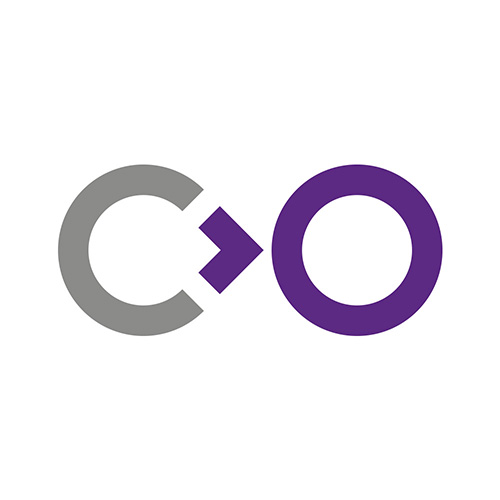I'm back from the GTK hackfest in Toronto, Canada and mostly recovered from jetlag, so it's time to write up my notes on what we discussed there.
Despite the hackfest's title, I was mainly there to talk about non-GUI parts of the stack, and technologies that fit more closely in what could be seen as the freedesktop.org platform than they do in GNOME. In particular, I'm interested in Flatpak as a way to deploy self-contained "apps" in a freedesktop-based, sandboxed runtime environment layered over the Universal Operating System and its many derivatives, with both binary and source compatibility with other GNU/Linux distributions.
I'm mainly only writing about discussions I was directly involved in: lots of what sounded like good discussion about the actual graphics toolkit went over my head completely :-) More notes, mostly from Matthias Clasen, are available on the GNOME wiki.
In no particular order:
Thinking with portals
We spent some time discussing Flatpak's portals, mostly on Tuesday. These are the components that expose a subset of desktop functionality as D-Bus services that can be used by contained applications: they are part of the security boundary between a contained app and the rest of the desktop session. Android's intents are a similar concept seen elsewhere. While the portals are primarily designed for Flatpak, there's no real reason why they couldn't be used by other app-containment solutions such as Canonical's Snap.
One major topic of discussion was their overall design and layout. Most portals will consist of a UX-independent part in Flatpak itself, together with a UX-specific implementation of any user interaction the portal needs. For example, the portal for file selection has a D-Bus service in Flatpak, which interacts with some UX-specific service that will pop up a standard UX-specific "Open" dialog — for GNOME and probably other GTK environments, that dialog is in (a branch of) GTK.
A design principle that was reiterated in this discussion is that the UX-independent part should do as much as possible, with the UX-specific part only carrying out the user interactions that need to comply with a particular UX design (in the GTK case, GNOME's design). This minimizes the amount of work that needs to be redone for other desktop or embedded environments, while still ensuring that the other environments can have their chosen UX design. In particular, it's important that, as much as possible, the security- and performance-sensitive work (such as data transport and authentication) is shared between all environments.
The aim is for portals to get the user's permission to carry out actions, while keeping it as implicit as possible, avoiding an "are you sure?" step where feasible. For example, if an application asks to open a file, the user's permission is implicitly given by them selecting the file in the file-chooser dialog and pressing OK: if they do not want this application to open a file at all, they can deny permission by cancelling. Similarly, if an application asks to stream webcam data, the UX we expect is for GNOME's Cheese app (or a similar non-GNOME app) to appear, open the webcam to provide a preview window so they can see what they are about to send, but not actually start sending the stream to the requesting app until the user has pressed a "Start" button. When defining the API "contracts" to be provided by applications in that situation, we will need to be clear about whether the provider is expected to obtain confirmation like this: in most cases I would anticipate that it is.
One security trade-off here is that we have to have a small amount of trust in the providing app. For example, continuing the example of Cheese as a webcam provider, Cheese could (and perhaps should) be a contained app itself, whether via something like Flatpak, an LSM like AppArmor or both. If Cheese is compromised somehow, then whenever it is running, it would be technically possible for it to open the webcam, stream video and send it to a hostile third-party application. We concluded that this is an acceptable trade-off: each application needs to be trusted with the privileges that it needs to do its job, and we should not put up barriers that are easy to circumvent or otherwise serve no purpose.
The main (only?) portal so far is the file chooser, in which the contained application asks the wider system to show an "Open..." dialog, and if the user selects a file, it is returned to the contained application through a FUSE filesystem, the document portal. The reference implementation of the UX for this is in GTK, and is basically a GtkFileChooserDialog. The intention is that other environments such as KDE will substitute their own equivalent.
Other planned portals include:
- image capture (scanner/camera)
- opening a specified URI
- this needs design feedback on how it should work for non-http(s)
- sharing content, for example on social networks (like Android's Sharing menu)
- proxying joystick/gamepad input (perhaps via Wayland or FUSE, or perhaps by modifying libraries like SDL with a new input source)
- network proxies (
GProxyResolver) and availability (GNetworkMonitor) - contacts/address book, probably vCard-based
- notifications, probably based on freedesktop.org Notifications
- video streaming (perhaps using Pinot, analogous to PulseAudio but for video)
Environment variables
GNOME on Wayland currently has a problem with environment variables: there are some traditional ways to set environment variables for X11 sessions or login shells using shell script fragments (/etc/X11/Xsession.d, /etc/X11/xinit/xinitrc.d, /etc/profile.d), but these do not apply to Wayland, or to noninteractive login environments like cron and systemd --user. We are also keen to avoid requiring a Turing-complete shell language during session startup, because it's difficult to reason about and potentially rather inefficient.
Some uses of environment variables can be dismissed as unnecessary or even unwanted, similar to the statement in Debian Policy §9.9: "A program must not depend on environment variables to get reasonable defaults." However, there are two common situations where environment variables can be necessary for proper OS integration: search-paths like $PATH, $XDG_DATA_DIRS and $PYTHONPATH (particularly necessary for things like Flatpak), and optionally-loaded modules like $GTK_MODULES and $QT_ACCESSIBILITY where a package influences the configuration of another package.
There is a stopgap solution in GNOME's gdm display manager, /usr/share/gdm/env.d, but this is gdm-specific and insufficiently expressive to provide the functionality needed by Flatpak: "set XDG_DATA_DIRS to its specified default value if unset, then add a couple of extra paths".
pam_env comes closer — PAM is run at every transition from "no user logged in" to "user can execute arbitrary code as themselves" — but it doesn't support .d fragments, which are required if we want distribution packages to be able to extend search paths. pam_env also turns off per-user configuration by default, citing security concerns.
I'll write more about this when I have a concrete proposal for how to solve it. I think the best solution is probably a PAM module similar to pam_env but supporting .d directories, either by modifying pam_env directly or out-of-tree, combined with clarifying what the security concerns for per-user configuration are and how they can be avoided.
Relocatable binary packages
On Windows and OS X, various GLib APIs automatically discover where the application binary is located and use search paths relative to that; for example, if C:\myprefix\bin\app.exe is running, GLib might put C:\myprefix\share into the result of g_get_system_data_dirs(), so that the application can ask to load app/data.xml from the data directories and get C:\myprefix\share\app\data.xml. We would like to be able to do the same on Linux, for example so that the apps in a Flatpak or Snap package can be constructed from RPM or dpkg packages without needing to be recompiled for a different --prefix, and so that other third-party software packages like the games on Steam and gog.com can easily locate their own resources.
Relatedly, there are currently no well-defined semantics for what happens when a .desktop file or a D-Bus .service file has Exec=./bin/foo. The meaning of Exec=foo is well-defined (it searches $PATH) and the meaning of Exec=/opt/whatever/bin/foo is obvious. When this came up in D-Bus previously, my assertion was that the meaning should be the same as in .desktop files, whatever that is.
We agreed to propose that the meaning of a non-absolute path in a .desktop or .service file should be interpreted relative to the directory where the .desktop or .service file was found: for example, if /opt/whatever/share/applications/foo.desktop says Exec=../../bin/foo, then /opt/whatever/bin/foo would be the right thing to execute. While preparing a mail to the freedesktop and D-Bus mailing lists proposing this, I found that I had proposed the same thing almost 2 years ago... this time I hope I can actually make it happen!
Flatpak and OSTree bug fixing
On the way to the hackfest, and while the discussion moved to topics that I didn't have useful input on, I spent some time fixing up the Debian packaging for Flatpak and its dependencies. In particular, I did my first upload as a co-maintainer of bubblewrap, uploaded ostree to unstable (with the known limitation that the grub, dracut and systemd integration is missing for now since I haven't been able to test it yet), got most of the way through packaging Flatpak 0.6.5 (which I'll upload soon), cherry-picked the right patches to make ostree compile on Debian 8 in an effort to make backports trivial, and spent some time disentangling a flatpak test failure which was breaking the Debian package's installed-tests. I'm still looking into ostree test failures on little-endian MIPS, which I was able to reproduce on a Debian porterbox just before the end of the hackfest.
OSTree + Debian
I also had some useful conversations with developers from Endless, who recently opened up a version of their OSTree build scripts for public access. Hopefully that information brings me a bit closer to being able to publish a walkthrough for how to deploy a simple Debian derivative using OSTree (help with that is very welcome of course!).
GTK life-cycle and versioning
The life-cycle of GTK releases has already been mentioned here and elsewhere, and there are some interesting responses in the comments on my earlier blog post.
It's important to note that what we discussed at the hackfest is only a proposal: a hackfest discussion between a subset of the GTK maintainers and a small number of other GTK users (I am in the latter category) doesn't, and shouldn't, set policy for all of GTK or for all of GNOME. I believe the intention is that the GTK maintainers will discuss the proposals further at GUADEC, and make a decision after that.
As I said before, I hope that being more realistic about API and ABI guarantees can avoid GTK going too far towards either of the possible extremes: either becoming unable to advance because it's too constrained by compatibility, or breaking applications because it isn't constrained enough. The current situation, where it is meant to be compatible within the GTK 3 branch but in practice applications still sometimes break, doesn't seem ideal for anyone, and I hope we can do better in future.
Acknowledgements
Thanks to everyone involved, particularly:
- Matthias Clasen, who organised the hackfest and took a lot of notes
- Allison Lortie, who provided on-site cat-herding and led us to some excellent restaurants
- Red Hat Inc., who provided the venue (a conference room in their Toronto office), snacks, a lot of coffee, and several participants
- my employers Collabora Ltd., who sponsored my travel and accomodation











 한국어 버전의 Collabora.com 보기
한국어 버전의 Collabora.com 보기 Acesse Collabora.com em Português
Acesse Collabora.com em Português
Comments (0)
Add a Comment